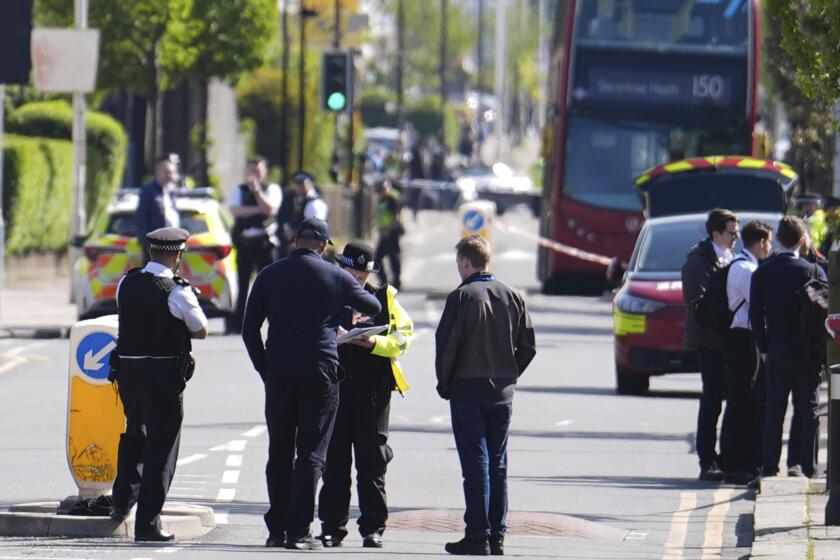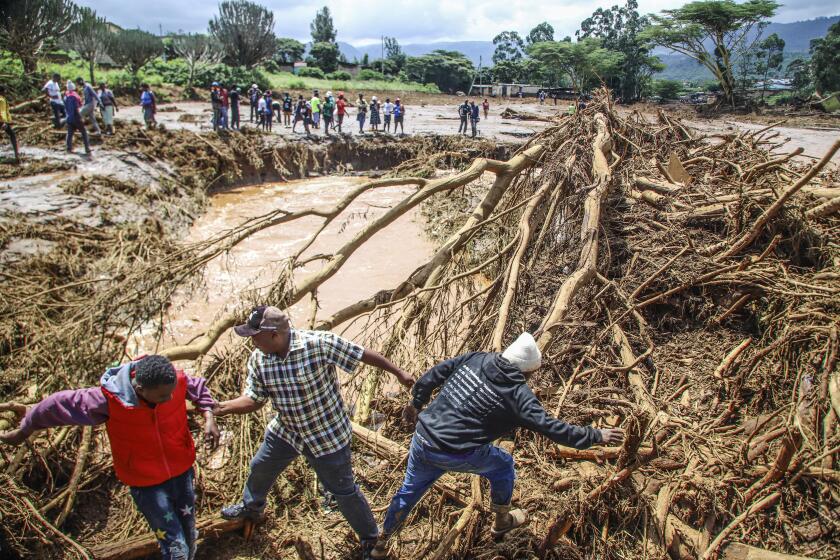Tales of Becket’s Bones Could Live Forever : Canterbury: Doubts persist on the fate of the archbishop’s remains after his shrine was destroyed in 1538. New book speculates on role of monks in hiding his ashes from minions of King Henry VIII.
What happened to the bones of St. Thomas a Becket, archbishop of Canterbury, when his shrine in Canterbury Cathedral was destroyed in 1538?
No written record of the event has been found. But within a month, Pope Paul III announced that Becket’s remains had been burnt and his ashes scattered to the winds by order of King Henry VIII, who imposed the Reformation on his kingdom.
But ever since, speculation abounded that the cathedral monks secretly removed the bones and substituted others in the shrine before the king’s commissioners arrived.
Conjecture over the fate of Catholic England’s most precious relics led to opening an unmarked grave in the cathedral three times.
“The last time it happened was in 1966, without any publicity,” said John Butler, an academic at the University of Kent at Canterbury.
Butler made that discovery too late for inclusion in his new book, “The Quest for Becket’s Bones,” recently published in Britain and the United States by Yale University Press.
His tale is curious and, as usual when old bones are rattling around, a good read.
Becket defied King Henry II by excommunicating courtiers, nobles and laymen for taking church property. He became internationally famous after he was murdered in 1170 in his own cathedral, cut down by four knights who believed they were carrying out the king’s expressed desire to be rid of the “turbulent priest.”
Becket quickly was canonized and, year after year, thousands of pilgrims from all over the Continent trekked to Canterbury to venerate him. Henry himself came to Canterbury in 1174 to prostrate himself before the tomb and endure a flagellation.
The monks recorded many cases of healing at the shrine among pilgrims who left gifts of gold and jewels, all confiscated 300 years later by Henry VIII. Saintly relics were destroyed at the same time because Protestants saw them as objects of superstition.
Butler’s research began in 1990 when he read a local newspaper report of the arrest in the cathedral precincts of two former members of the French Foreign Legion carrying burglary tools.
“I found they were set free after telling the magistrates that they hadn’t intended to steal anything but to open the tomb of the French Cardinal Chatillon to prove it held not his bones but Becket’s,” Butler said.
“I thought this was extraordinary, mysterious and bizarre and it fired my imagination,” said Butler, 52, a professor of health service studies at the University of Kent.
“I was hooked two weeks later by a letter in the newspaper saying [that] the theory wasn’t plausible but that Becket’s relics did survive and were buried secretly in another part of the cathedral. The writer claimed the site was known to a handful of people in each generation who gather there each year to pray for the conversion of England to Rome,” Butler said.
The supposed site is an unmarked grave at the east end of the crypt, close to the place of Becket’s burial until his remains were removed in 1220 to the shrine in Trinity Chapel immediately above.
The site of Becket’s shrine is now marked by a single candle burning on the floor of Trinity Chapel.
There is another story that Becket’s bones may lie in one of two unidentified graves in the north transept of the crypt.
“I haven’t discovered the bones of Becket and I don’t even know whether they exist. I just tell a fascinating story,” said Butler.
The first modern dig in the eastern crypt grave was in 1888 when the broken skull and bones of a tall, middle-aged man were found. They were examined and reinterred with no unanimous conclusion about whose bones they were. The same grave was reopened in 1949, again with inconclusive results.
Others who also delved deeply into the subject felt that Becket’s bones were still in the cathedral, among them the surgeon W. Pugin Thornton who examined the bones found in 1888, and cathedral Canon Arthur Mason, whose book, “What Became of the Bones of St. Thomas?” was published in 1920.
More to Read
Start your day right
Sign up for Essential California for news, features and recommendations from the L.A. Times and beyond in your inbox six days a week.
You may occasionally receive promotional content from the Los Angeles Times.






